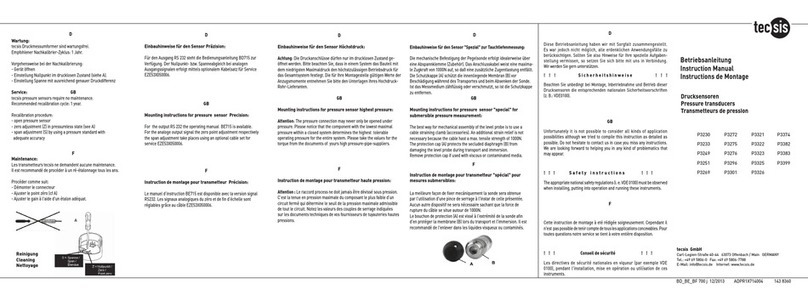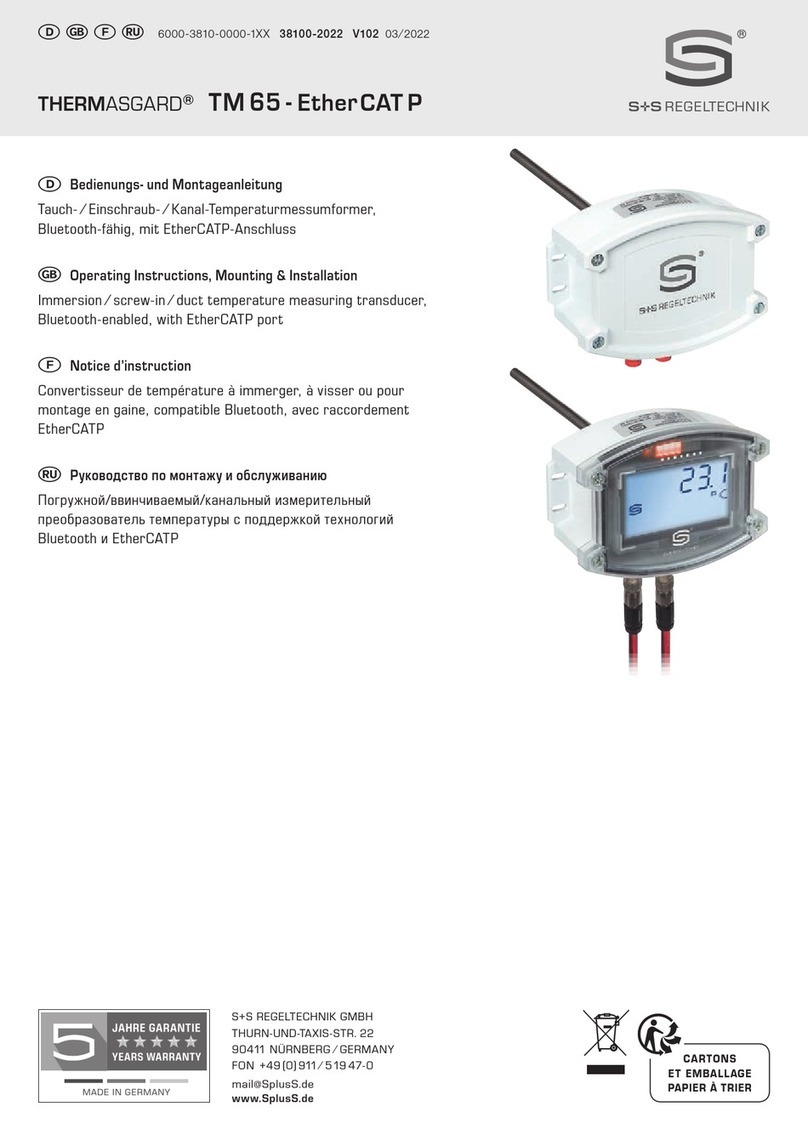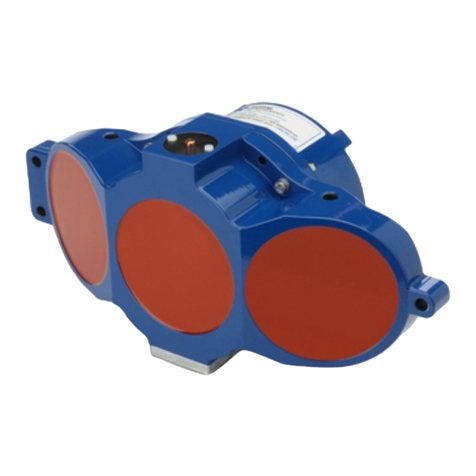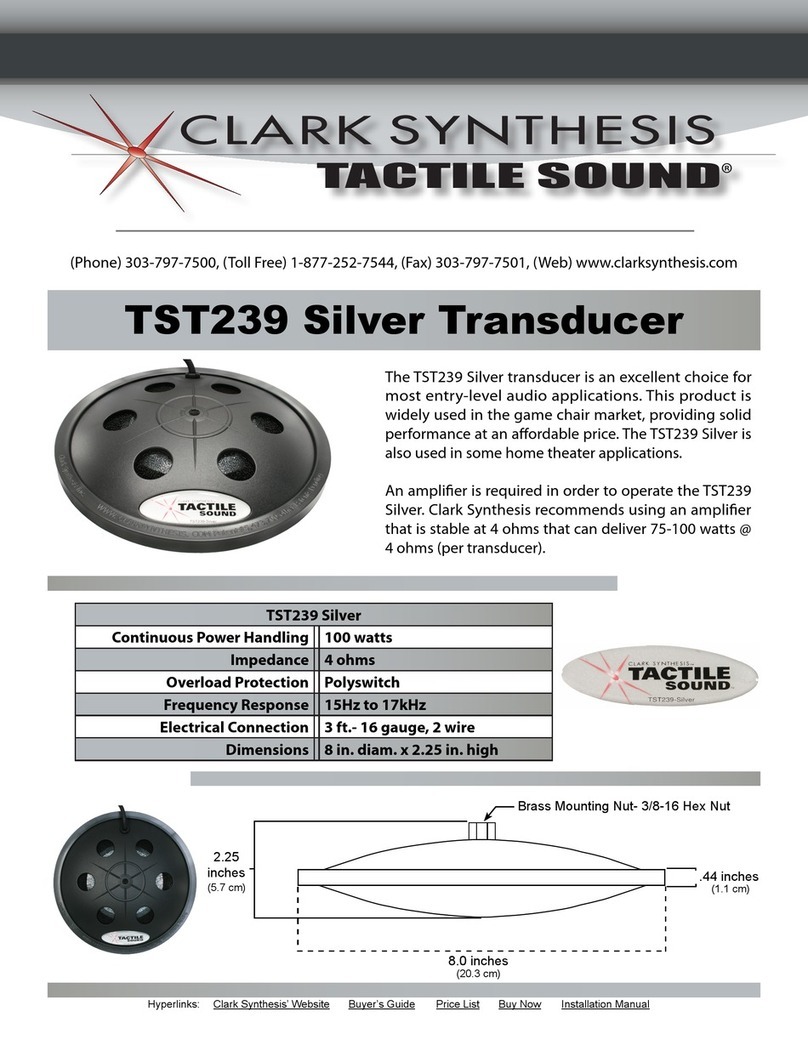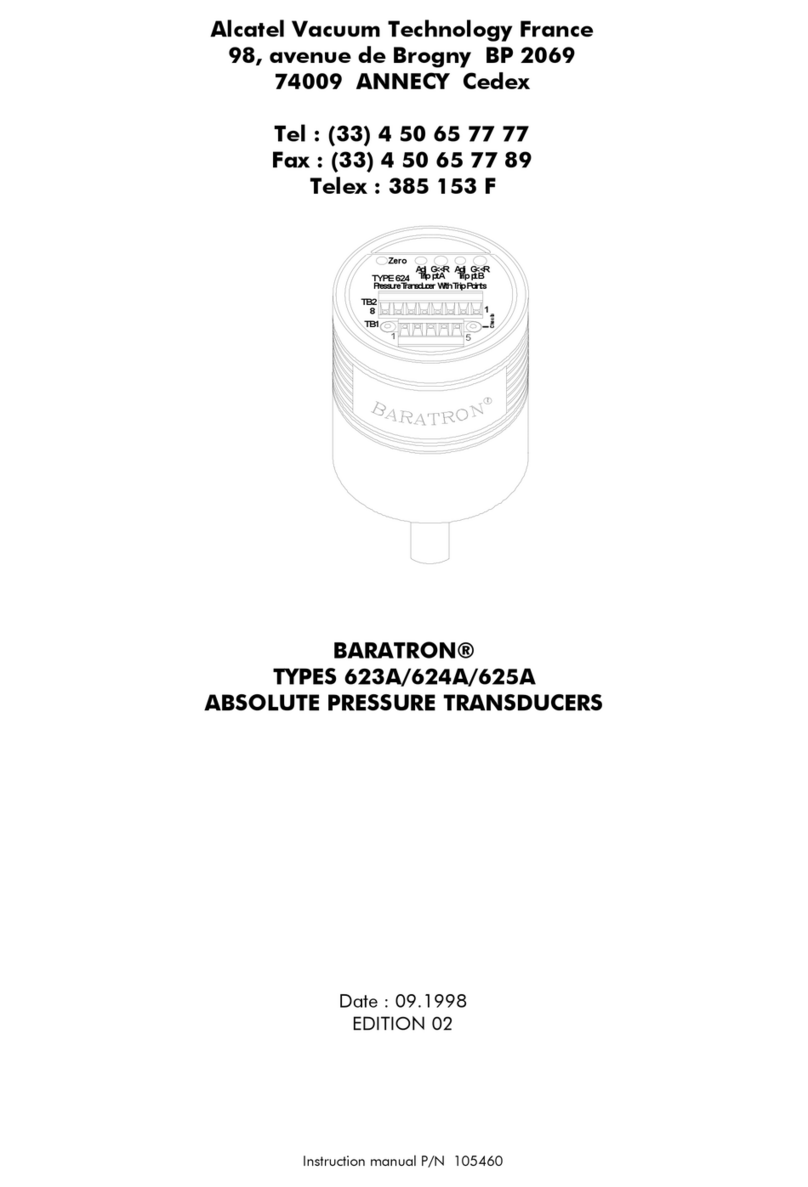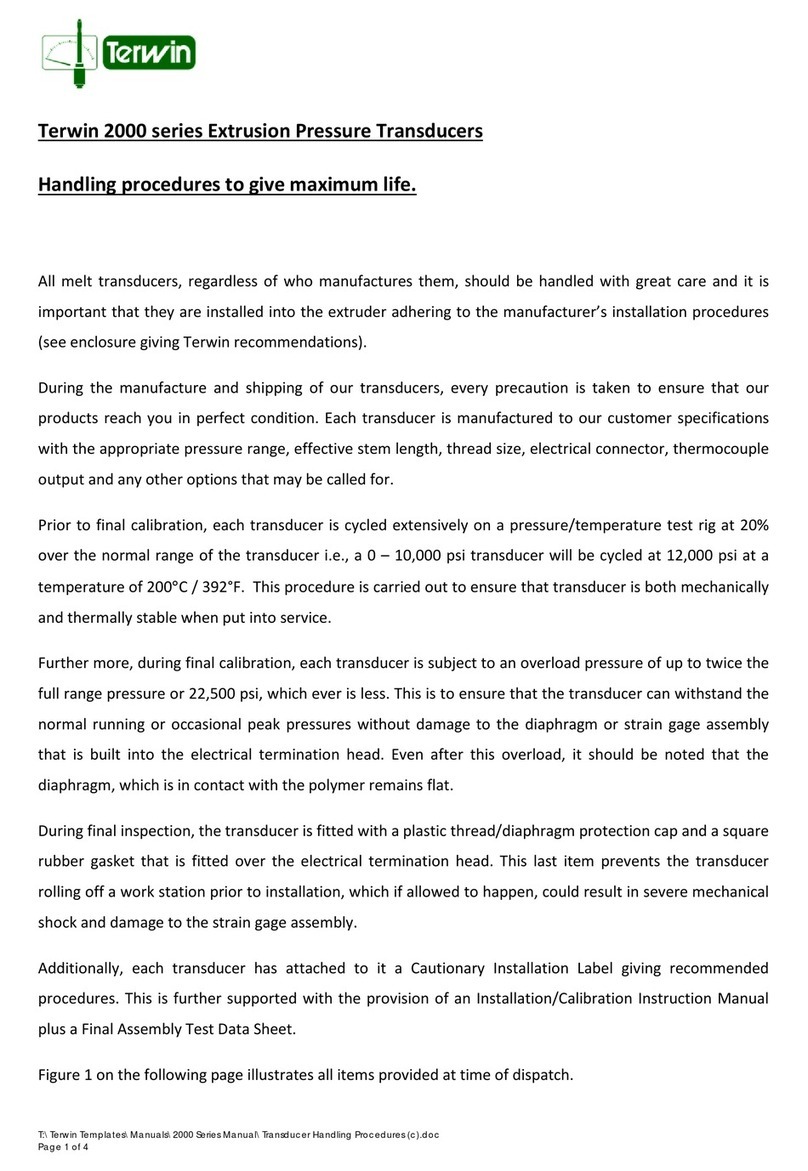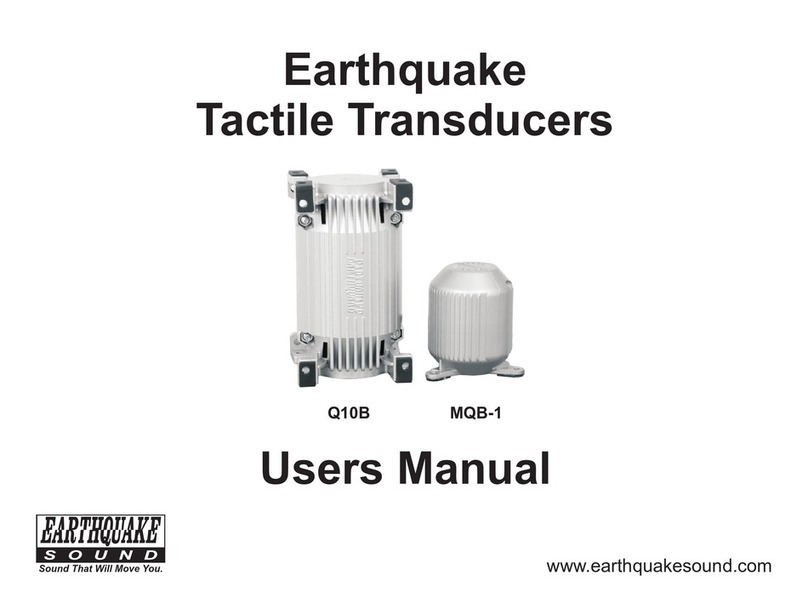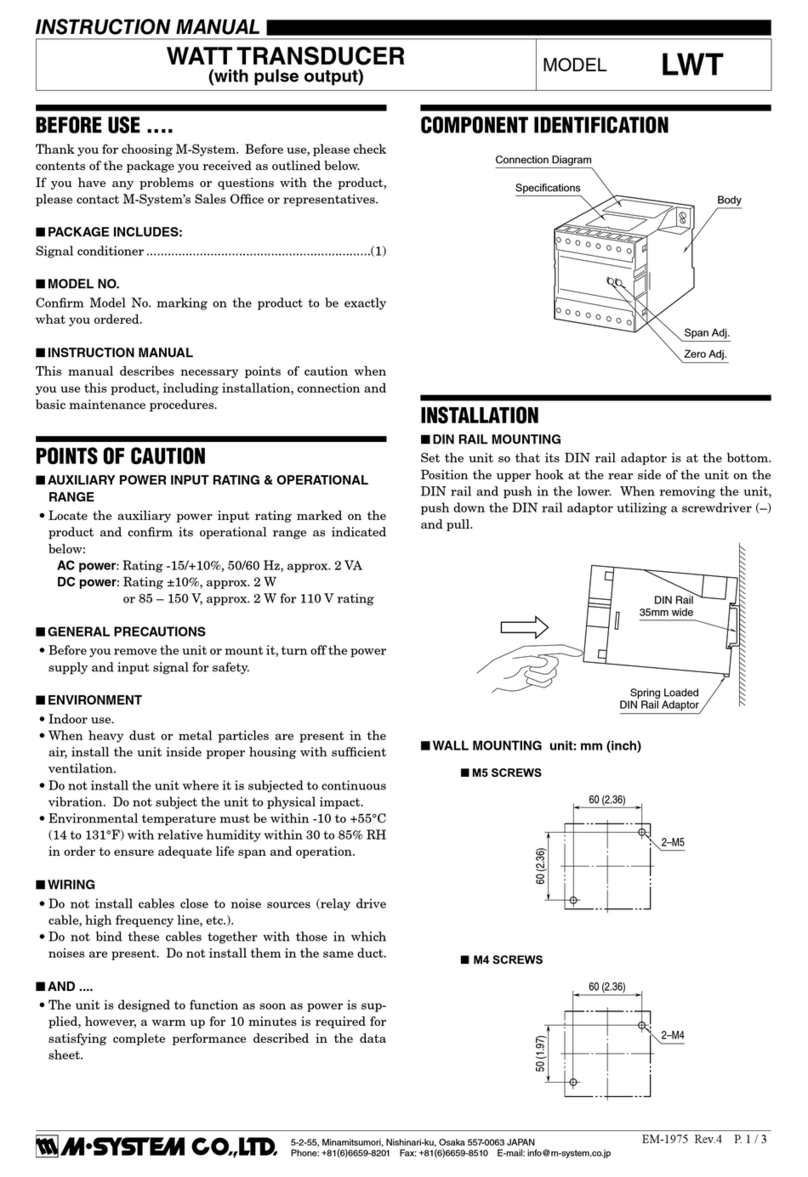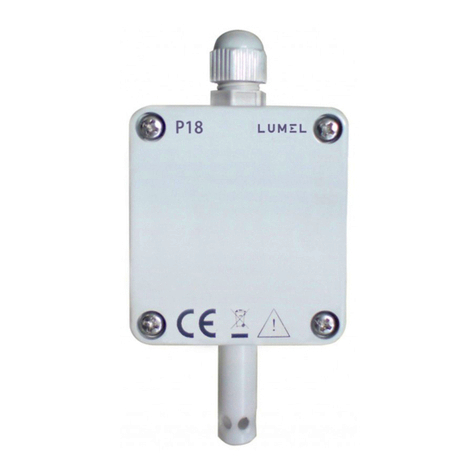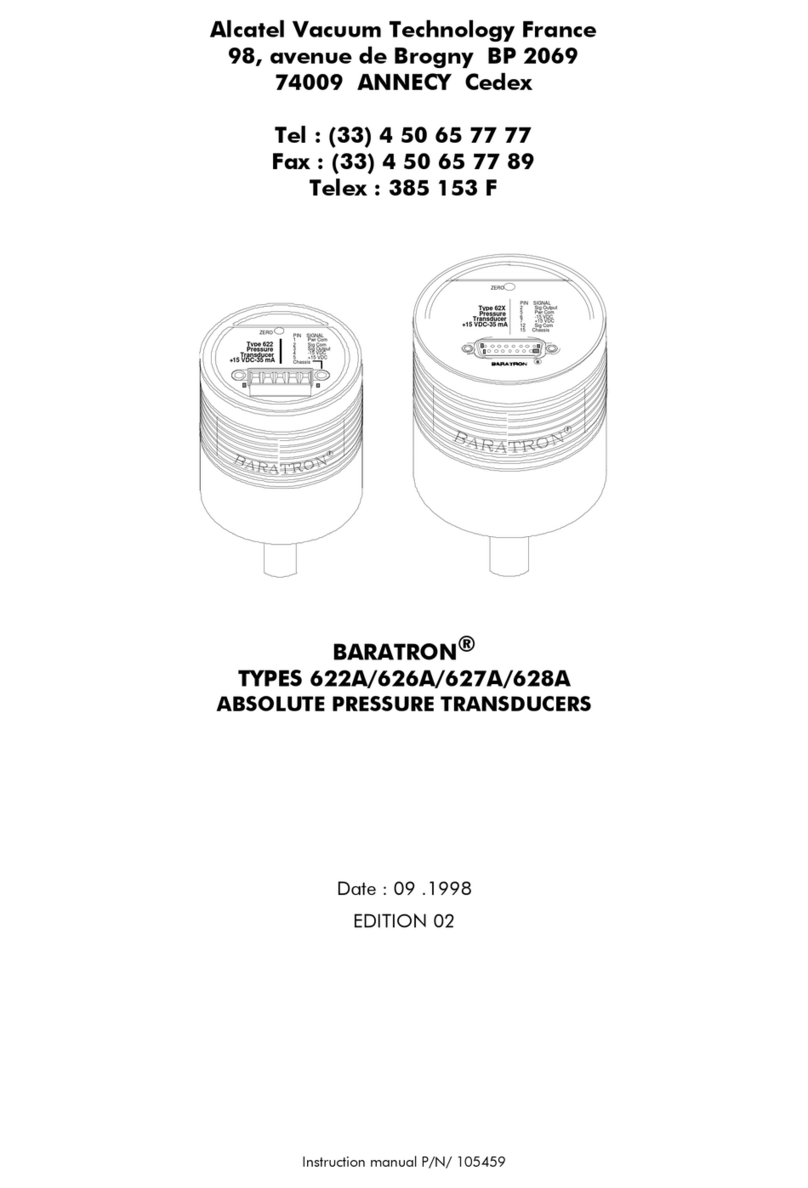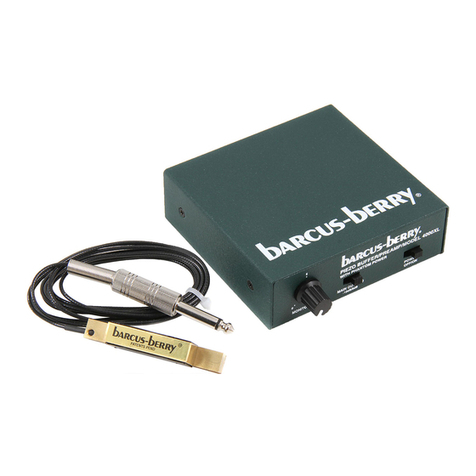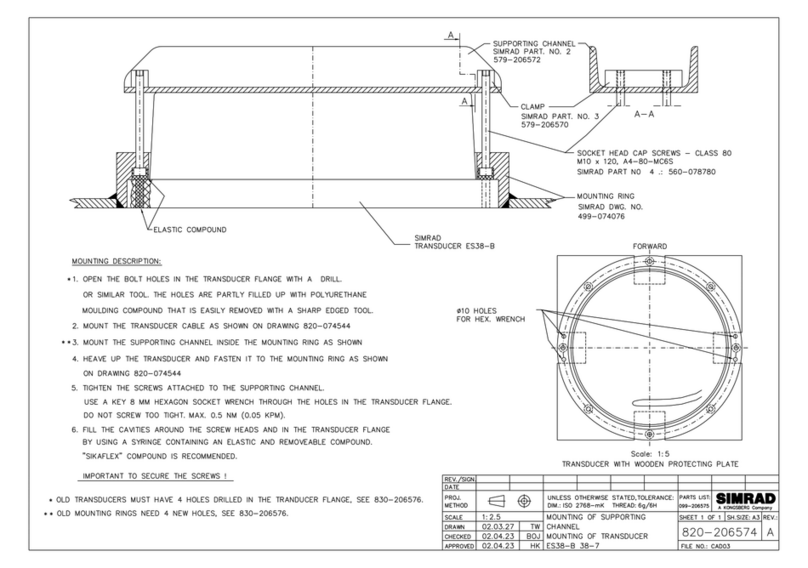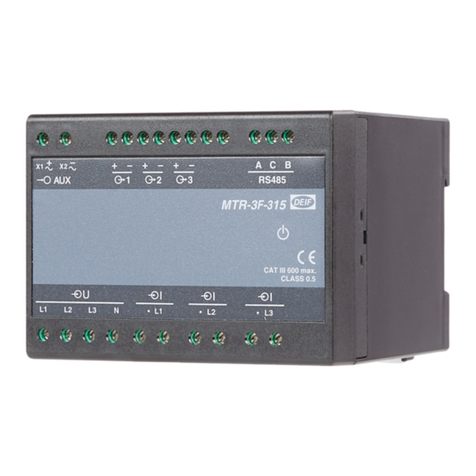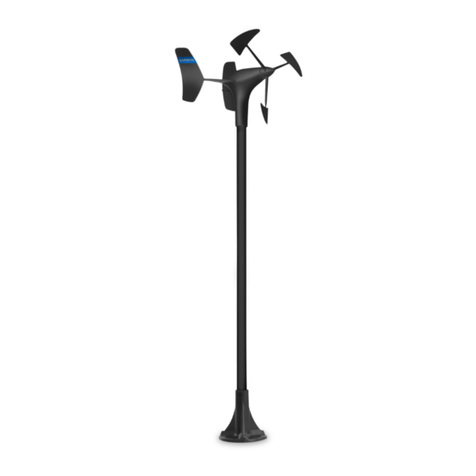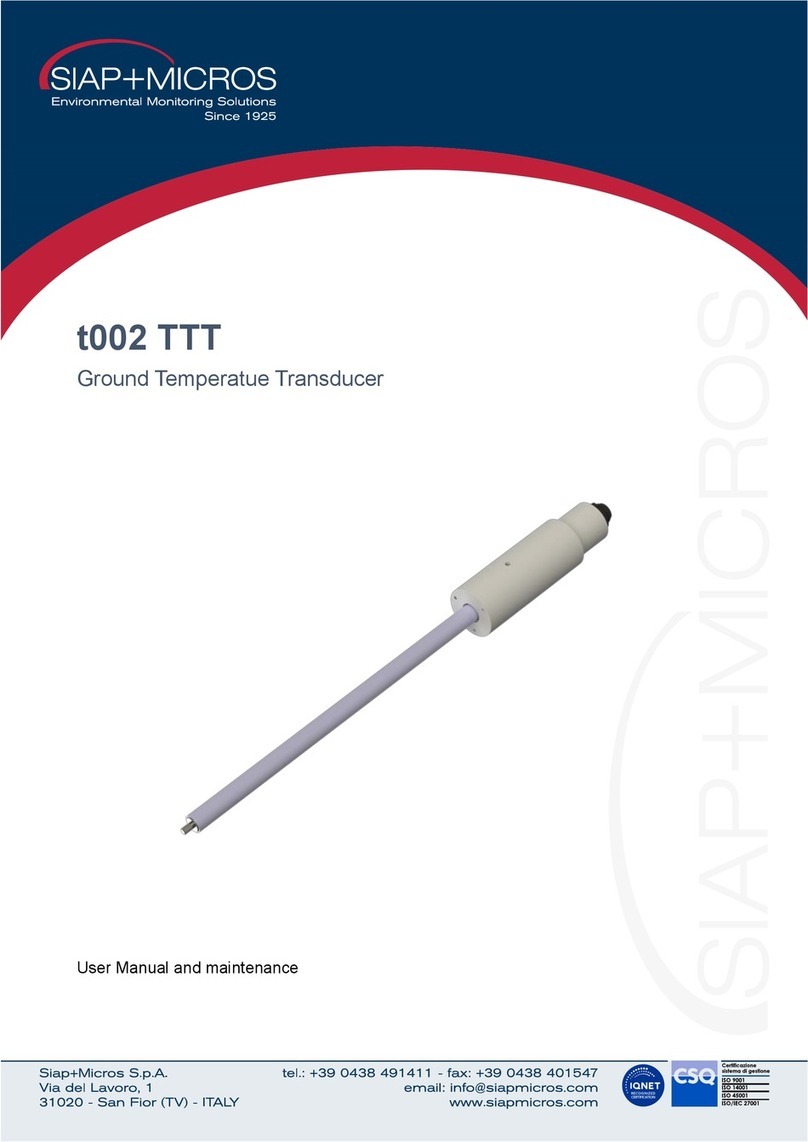
Page 2 of 4
2000 Series Installation & Instruction Manual (B)
Last printed 12/03/2007 11:26:00
HANDLING
The transducers should be handled with great care. They should not be dropped and the front diaphragm should be prevented fr om coming into contact
with sharp objects. Under no circumstances should the diaphragm be cleaned with a wire brush or abrasive cleaners. If the transducers require cleaning,
use only a clean cloth when the transducer is hot and at around the same temperature as the material which was previously being processed. Additionally,
always ensure that before removing a transducer from an extruder, the processed material is still at its working temperature. If the material being extruded
has become cold, this could lead to the diaphragm being damaged when the transducer is removed.
UNDER NO CIRCUMSTANCES MUST THE TRANSDUCER BE REMOVED FROM THE EXTRUDER WHILST UNDER PRESSURE!
BEFORE INSTALLATION
Always ensure that the mounting hole conforms to the required dimensions that are shown on the reverse of this leaflet, and that it is clean and entirely
free of old processed material that may damage the transducers sensitive diaphragm.
INSTALLATION
Lubricate the threads of the transducer before each installation with Dow Corning Molycote G or a similar product. Screw the transducer into the extruder
and torque to 20ft lbs. maximum - 10ft lbs. minimum. DO NOT over torque as this may lead to the transducer being damaged beyond repair.
RECOMMENDED PORT DIMENSIONS
ELECTRICAL CONNECTIONS
Please refer to the calibration data sheet which is sent out with each 1000 / 2000 & 2200 series pressure transducer, full electrical connections /
specifications are detailed on this.
CALIBRATION Note: All adjustments are to be made at zero pressure.
1) Ensure that the pressure transducer is at working temperature and power has been applied to the measuring instrument.
2) Adjust the ZERO screw on the measuring instrument until a true zero reading is achieved. (For Auto zero and calibration. ins truments, see their
instruction manuals.)
3) Press the “SPAN” or “CALIBRATION” switch on the measuring instrument and adjust the SPAN or CAL screw so the instrument display matches
the calibration figure that is printed on the pressure transducer. This value is stated in both percentage of full-scale range and also in psi, bar etc.,
if a 10,000psi transducer has a calibration value of 80%, this calibration will also be expressed as 8,000psi.
4) Re-check the zero reading and adjust again if necessary and then repeat the Span/CAL adjustment as detailed above in section 3).
CAUTION:- DO NOT make ANY adjustments when there is pressure on the transducer. This could cause the pressure reading to be low, resulting
in the machine being over pressurised.
COLD STARTS
Always ensure that the processed product has reached the correct extrusion temperature before the screw is run. Failure to adhere to this instruction may
lead to the transducer sensing diaphragm being damaged.
44.5 (1.75) MAX. DEPTH
5.84 ±0.10 (0.230 ±0.004)
9.53 (0.375)
45°
-0
15.9 (0.626) DIA
C'BORE
19.1 (0.75) MIN.
10.72±0.03DIA
(0.422±0.001)
7.95±0.03 DIA.
(0.313±0.001)
1/2" - 20 U.N.F. - 2B
